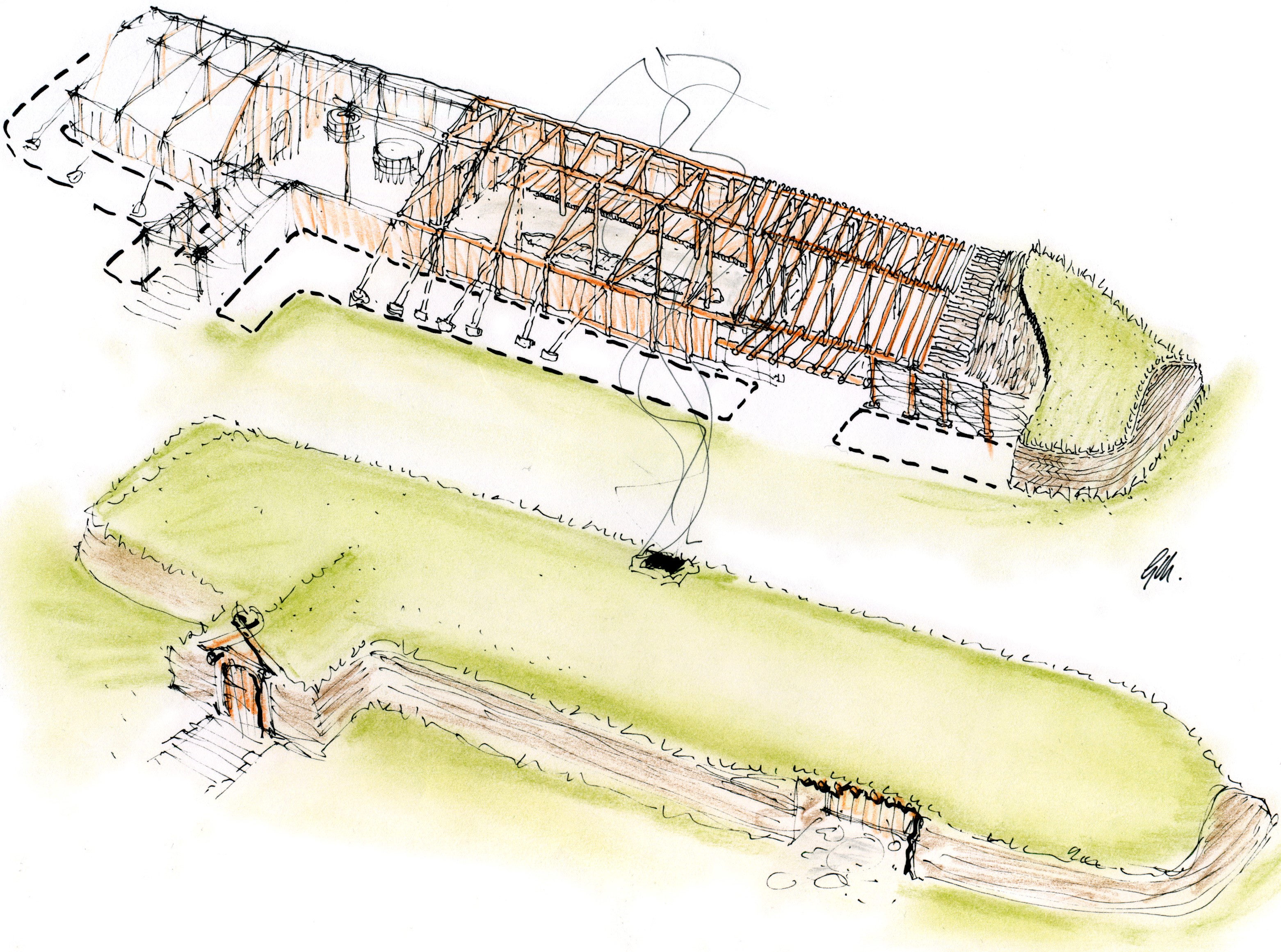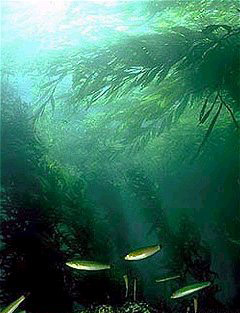|
Jon M. Erlandson
Jon M. Erlandson is an archaeologist, professor emeritus in the Department of Anthropology at the University of Oregon, and the former director of the University of Oregon Museum of Natural and Cultural History. Erlandson’s research interests include coastal adaptations, the peopling of North America, maritime archaeology and historical ecology and human impacts in coastal ecosystems. Education and background Erlandson received his B.A. in Physical Anthropology from the University of California, Santa Barbara in 1980. He then completed his M.A. and Ph.D. from the same university in Archaeology. Erlandson also was a founding co-editor of the Journal of Island and Coastal Archaeology. He has also published more than 400 scholarly articles and edited or written 29 books. In 2013, Erlandson was elected to the American Academy of Arts and Sciences. In 2021 he was elected as a fellow to the American Association for the Advancement of Science. Erlandson was born in Santa Barbara, Cal ... [...More Info...] [...Related Items...] OR: [Wikipedia] [Google] [Baidu] |
University Of Oregon
The University of Oregon (UO, U of O or Oregon) is a Public university, public research university in Eugene, Oregon, United States. Founded in 1876, the university is organized into nine colleges and schools and offers 420 undergraduate and graduate degree programs. The university also operates the Ballmer Institute for Children's Behavioral Health in Portland, Oregon; the Oregon Institute of Marine Biology in Charleston, Oregon; and Pine Mountain Observatory in Central Oregon. UO's 295-acre campus is situated along the Willamette River. Most academic programs follow the 10-week quarter system. The university is Carnegie Classification of Institutions of Higher Education, classified among "R1: Doctoral Universities – Very high research activity" and is a member of the Association of American Universities. Since July 2014, UO has been governed by Board of Trustees of the University of Oregon, its own board of trustees. UO student-athletes compete as the Oregon Ducks and are pa ... [...More Info...] [...Related Items...] OR: [Wikipedia] [Google] [Baidu] |
Coastal Migration (Americas)
The coastal migration hypothesis is one of two leading hypotheses about the settlement of the Americas at the time of the Last Glacial Maximum. It proposes one or more migration routes involving watercraft, via the Kurile island chain, along the coast of Beringia and the archipelagos off the Alaskan-British Columbian coast, continuing down the coast to Central and South America. The alternative is the hypothesis solely by interior routes, which assumes migration along an ice-free corridor between the Laurentide and Cordilleran ice sheets during the Last Glacial Maximum. The coastal migration hypothesis has been bolstered by findings such as the report that the sediments in the Port Eliza caves on Vancouver Island indicate the possibility of a survivable climate as far back 16 ka (16,000 years) in the area, while the continental ice sheets were nearing their maximum extent. Despite such research, the hypothesis is still subject to considerable debate. Carlson, Erlandson, and o ... [...More Info...] [...Related Items...] OR: [Wikipedia] [Google] [Baidu] |
Living People
Purpose: Because living persons may suffer personal harm from inappropriate information, we should watch their articles carefully. By adding an article to this category, it marks them with a notice about sources whenever someone tries to edit them, to remind them of WP:BLP (biographies of living persons) policy that these articles must maintain a neutral point of view, maintain factual accuracy, and be properly sourced. Recent changes to these articles are listed on Special:RecentChangesLinked/Living people. Organization: This category should not be sub-categorized. Entries are generally sorted by family name In many societies, a surname, family name, or last name is the mostly hereditary portion of one's personal name that indicates one's family. It is typically combined with a given name to form the full name of a person, although several give .... Maintenance: Individuals of advanced age (over 90), for whom there has been no new documentation in the last ten ... [...More Info...] [...Related Items...] OR: [Wikipedia] [Google] [Baidu] |
Coastal Migration
In the context of the recent African origin of modern humans, the Southern Dispersal scenario (also the coastal migration or great coastal migration) refers to the early migration along the southern coast of Asia, from the Arabian Peninsula via Persia and India to Southeast Asia and Oceania. Alternative names include the "southern coastal route" or "rapid coastal settlement", with later descendants of those migrations eventually colonizing the rest of Eastern Eurasia, the remainder of Oceania, and the Americas. According to this thesis, the dispersal was possible thanks to the development of a multipurpose subsistence strategy, based on the collection of organisms, fish, crustaceans, molluscs, algae, which are part of the biotic communities of the intertidal zone, the transition ecosystem between land and sea between the upper limit of high tides and the lower limit of low tides, i.e. organisms left behind by the waters which retreat during ebb tide, and which people could harve ... [...More Info...] [...Related Items...] OR: [Wikipedia] [Google] [Baidu] |
Viking
Vikings were seafaring people originally from Scandinavia (present-day Denmark, Norway, and Sweden), who from the late 8th to the late 11th centuries raided, pirated, traded, and settled throughout parts of Europe.Roesdahl, pp. 9–22. They also voyaged as far as the Mediterranean Sea, Mediterranean, North Africa, the Middle East, Greenland, and Vinland (present-day Newfoundland in Canada, North America). In their countries of origin, and some of the countries they raided and settled in, this period is popularly known as the Viking Age, and the term "Viking" also commonly includes the inhabitants of the Scandinavian homelands as a whole. The Vikings had a profound impact on the Early Middle Ages, early medieval history of Northern Europe, northern and Eastern Europe, including the political and social development of England (and the English language) and parts of France, and established the embryo of Russia in Kievan Rus'. Expert sailors and navigators of their cha ... [...More Info...] [...Related Items...] OR: [Wikipedia] [Google] [Baidu] |
Jesse Byock
Jesse L. Byock (born 1945) is Professor of Old Norse and Medieval Scandinavian Studies in the Scandinavian Section at the University of California, Los Angeles (UCLA). Career He received his Ph.D. from Harvard University. An archaeologist and specialist in the archaeology, history and language of the Viking Age, he is Professor at UCLA’s Cotsen Institute of Archaeology. In Iceland, Prof. Byock is the Head Archaeologist and Director of the Mosfell Archaeological Project, excavating a Viking Age valley described in the medieval sagas and written sources. The Mosfell excavations include a large well-preserved chieftain’s hall, Christian and pagan burial sites, a conversion-age stave church, and a harbor from the first centuries of Iceland’s settlement during the Viking Age. Jesse Byock is also affiliated Professor at the University of Iceland (Háskóli Íslands) in the Department of History and the Programs in Medieval Icelandic and Viking Studies, where he teaches cou ... [...More Info...] [...Related Items...] OR: [Wikipedia] [Google] [Baidu] |
Chumash People
The Chumash are a Native Americans in the United States, Native American people of the central and southern coastal regions of California, in portions of what is now Kern County, California, Kern, San Luis Obispo County, California, San Luis Obispo, Santa Barbara County, California, Santa Barbara, Ventura County, California, Ventura and Los Angeles County, California, Los Angeles counties, extending from Morro Bay in the north to Malibu, California, Malibu in the south to Mt Pinos in the east. Their territory includes three of the Channel Islands (California), Channel Islands: Santa Cruz Island, Santa Cruz, Santa Rosa Island (California), Santa Rosa, and San Miguel Island, San Miguel; the smaller island of Anacapa Island, Anacapa was likely inhabited seasonally due to the lack of a consistent water source. Modern place names with Chumash origins include Malibu, California, Malibu, Nipomo, California, Nipomo, Lompoc, California, Lompoc, Ojai, California, Ojai, Pismo Beach, Point ... [...More Info...] [...Related Items...] OR: [Wikipedia] [Google] [Baidu] |
Channel Islands Of California
The Channel Islands () are an eight-island archipelago located within the Southern California Bight in the Pacific Ocean, off the coast of California. They define the Santa Barbara Channel between the islands and the California mainland. The four Northern Channel Islands are part of the Transverse Ranges geologic province, and the four Southern Channel Islands are part of the Peninsular Ranges province. Five of the islands are within the Channel Islands National Park. The waters surrounding these islands make up Channel Islands National Marine Sanctuary. The Nature Conservancy was instrumental in establishing the Channel Islands National Marine Sanctuary. There is evidence that humans have lived on the Northen Channel Islands for thousands of years. Radiocarbon dating shows that there was a continuous human presence between 8000-11000 years ago. The islands were inhabited primarily by two different Native American groups, the Chumash people, Chumash, and the Tongva people, Ton ... [...More Info...] [...Related Items...] OR: [Wikipedia] [Google] [Baidu] |
Paleoindian
Paleo-Indians were the first peoples who entered and subsequently inhabited the Americas towards the end of the Late Pleistocene period. The prefix ''paleo-'' comes from . The term ''Paleo-Indians'' applies specifically to the lithic period in the Western Hemisphere and is distinct from the term ''Paleolithic''.''Paleolithic'' specifically refers to the period between million years ago and the end of the Pleistocene in the Eastern Hemisphere. It is not used in New World archaeology. Traditional theories suggest that big-animal hunters crossed the Bering Strait from North Asia into the Americas over a land bridge (Beringia). This bridge existed from 45,000 to 12,000 BCE (47,000–14,000 BP). Small isolated groups of hunter-gatherers migrated alongside herds of large herbivores far into Alaska. From BCE ( BP), ice-free corridors developed along the Pacific coast and valleys of North America. [...More Info...] [...Related Items...] OR: [Wikipedia] [Google] [Baidu] |
Kelp Forests
Kelp forests are underwater areas with a high density of kelp, which covers a large part of the world's coastlines. Smaller areas of anchored kelp are called kelp beds. They are recognized as one of the most productive and dynamic ecosystems on Earth. Although algal kelp forest combined with coral reefs only cover 0.1% of Earth's total surface, they account for 0.9% of global primary productivity. Kelp forests occur worldwide throughout temperate and polar coastal oceans. In 2007, kelp forests were also discovered in tropical waters near Ecuador. Physically formed by brown macroalgae, kelp forests provide a unique habitat for marine organisms and are a source for understanding many ecological processes. Over the last century, they have been the focus of extensive research, particularly in trophic ecology, and continue to provoke important ideas that are relevant beyond this unique ecosystem. For example, kelp forests can influence coastal oceanographic patterns and provide ma ... [...More Info...] [...Related Items...] OR: [Wikipedia] [Google] [Baidu] |






